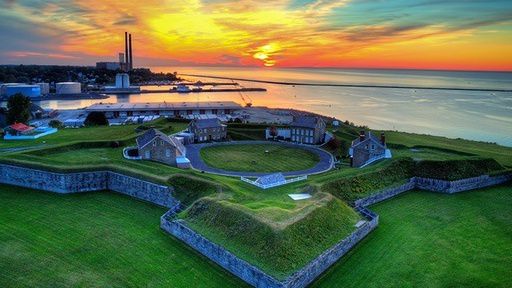In a letter to the Secretary of the U.S. Department of the Interior Wednesday, U.S. Rep. John Katko (NY-24) has urged the department to expedite the entry of Fort Ontario in Oswego to the National Parks system, citing a special resource study finding the site as both a place of historic and local significance.
In 2018, Katko-authored legislation prompted the National Park Service to evaluate the fort, the finalization of which is a prerequisite for it to eventually enter the NPS system.
"First constructed in the mid-18th century, Fort Ontario is a unique site in early-American history and served as the location of battles during the French and Indian War, the American Revolution, and the War of 1812. The Fort was burned down and reconstructed three separate times over the span of these conflicts, and afterward remained an active military installation into the 20th century," read the letter in part. "In 1944, President Franklin Roosevelt signed an executive order designating Fort Ontario as the first and only emergency refugee shelter in the United States for survivors of the Holocaust. Under this order, 982 men, women, and children that had escaped genocide at the hands of the Nazis were transported across the Atlantic to take refuge in the Fort."
Both Katko and U.S. Senator Chuck Schumer (D-N.Y.) on Wednesday led members of the New York Congressional delegation in advocating for the process to be expedited, saying that survivors of events like the Holocaust who saw the fort's relevance firsthand deserve to see the park admitted as a National Park while they are still alive.
“This history is still very much alive in Central New York, and there are still residents in our community that are able to recall their firsthand experiences at Fort Ontario during this definitive time in our nation's history," said Katko in the letter. "The Fort first opened its doors as an emergency shelter seventy-eight years ago, however, and we are growing increasingly worried that many of these individuals will not be around to see the permanent commemoration of this history through the Fort's designation as part of the National Park System.”



